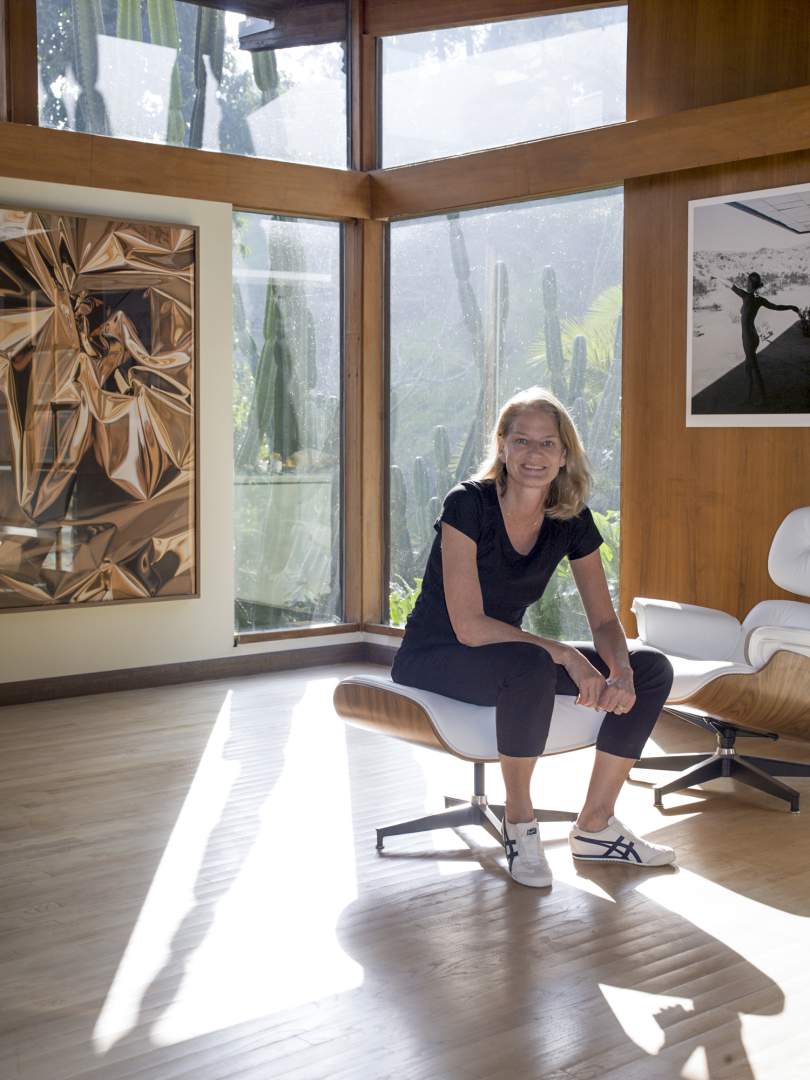- MARC LAGRANGE
- STEVE McCURRY
- SARA PUNT
- MONA KUHN
- JOACHIM SCHMEISSER
- TYLER SHIELDS
- SIDE EFFECTS
- DANIEL HELLERMANN
- GREG GORMAN
- SEBASTIAN COPELAND
- ELLEN VON UNWERTH
- NICK VEASEY
- SYLVIE BLUM
- SANTE D'ORAZIO
- ANDREAS H. BITESNICH
- JAY FOSTER
I'm most comfortable representing the nude as minimal and timeless. I like to cherish the body as a source of inspiration, as a platform for metaphors, for intimacy and complexities of human nature. It is my way of investigating the deepest questions about life.
- Mona Kuhn -

For the past two decades, the Los Angeles based artist's works have been shown steadily, revealing an astonishing consistency in technique, of subject and of purpose. In 2001, Kuhn’s photographs were first seen by an influential audience during the exhibition at Charles Cowles Gallery in Chelsea, New York. Kuhn’s distinct aesthetic has propelled her as one of the most collectible contemporary art photographers — her work is in private and public collections worldwide and she is represented by galleries across the United States, Europe and Asia.
Kuhn was born in São Paulo, Brazil, in 1969, of German descent. In 1989, Kuhn moved to the US and earned her BA from The Ohio State University, before furthering her studies at the San Francisco Art Institute. She is currently an independent scholar at The Getty Research Institute in Los Angeles. Occasionally, Mona teaches at UCLA and the Art Center College of Design in Pasadena.
Mona Kuhn’s first monograph, Photographs, was debuted by Steidl in 2004; followed by Evidence (2007), Native (2010), Bordeaux Series (2011), Private (2014), and She Disappeared into Complete Silence (2018/19). In addition, Kuhn's monograph titled Bushes and Succulents has been published by Stanley/Barker Editions, with a debut at Jeu de Paume in Paris, in 2019. A stunning career retrospective of Mona Kuhn's Works has been published by Thames & Hudson, Spring 2021. Kuhn's publication Kings Road, was published and released by Steidl, in Spring 2022. Mona Kuhn’s work is in private and public collections worldwide, including The J. Paul Getty Museum, Los Angeles County Museum of Art, The Hammer Museum, Perez Art Museum Miami, Museum of Fine Arts, Houston, and the Kiyosato Museum in Japan. Kuhn's work has been exhibited at The Louvre Museum and Le Bal in Paris; The Whitechapel Gallery and Royal Academy of Arts in London; Musée de l’Elysée in Switzerland; Leopold Museum in Vienna Austria, The Polygon Gallery in Vancouver Canada, Taipei Fine Arts Museum in Taiwan and Australian Centre for Photography.
Mona Kuhn lives and works in Los Angeles.
Before being a series of landscapes and portraits, Mona Kuhn's Native is a poem in green and gold, accented with pink. It is a universe outside of time, in an indetermined, almost mythic.
Kuhn's Brazil is mobile, never fixed; this cradling motion in time is it's raison d'etre.
Excerpt from text written by Shelley Rice, critic and historian at NYU Tisch School of the Arts
In this new series, Mona Kuhn takes a new direction into abstraction.
She turns to a highly austere and restrained reductionist geometry and distilled formal purity, connecting the interior to the exterior, the visible to the hidden.
These reflections cause one to linger, as they merge to create a dynamic equilibrium of tension, spaces and rhythms.
Excerpt from text written by Salvador Nadales, Curator of Painting and Drawings at Museo Reina Sofia in Madrid, Spain.